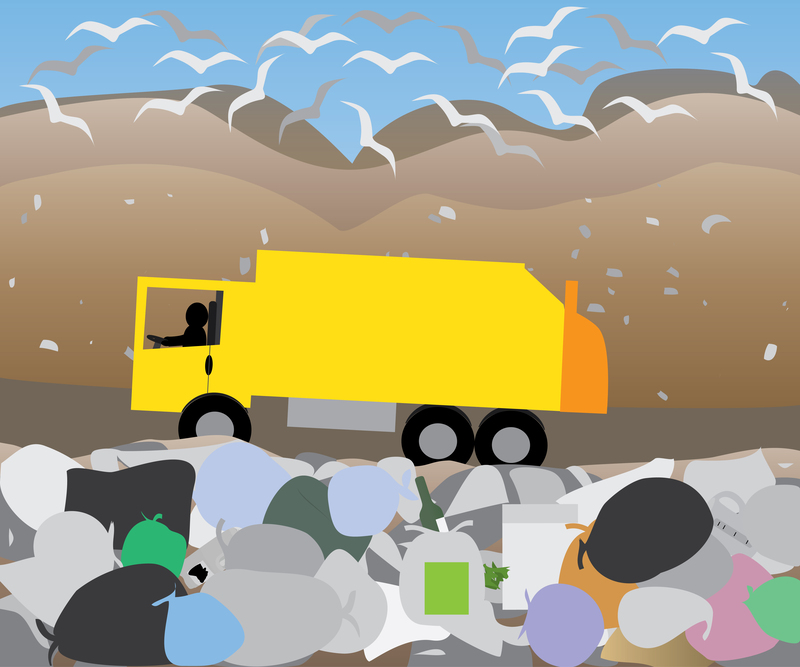Identifying Waste Materials That Are Hazardous: A Comprehensive Guide
Proper identification of hazardous waste materials is crucial for environmental safety, regulatory compliance, and public health. As industries and households generate increasing amounts of waste, understanding hazardous waste materials and knowing how to identify them is essential. In this article, you will find an in-depth analysis of waste classification, regulatory guidelines, and actionable strategies for recognizing different types of hazardous materials in waste streams.

What Are Hazardous Waste Materials?
Hazardous waste materials are substances that pose substantial or potential threats to public health or the environment. These wastes originate from various sources, including industrial, commercial, medical, and even household activities. The identification of hazardous materials is not only a matter of best practice but also a legal requirement enforced by environmental regulatory bodies, such as the U.S. Environmental Protection Agency (EPA) and local authorities worldwide.
Key Characteristics of Hazardous Waste
- Toxicity: Substances harmful to living organisms, even in small quantities.
- Ignitability: Materials that can easily catch fire or explode.
- Corrosivity: Waste that can melt or degrade materials, including skin and living tissue.
- Reactivity: Items that can react violently with water, air, or other chemicals.
These characteristics are crucial in the identification of hazardous waste streams and form the basis for legal classifications.
Legal and Regulatory Framework for Hazardous Waste Identification
Understanding the laws and regulations regarding hazardous waste is vital for compliance and safety. The Resource Conservation and Recovery Act (RCRA) in the United States and similar international mandates establish strict guidelines for identifying, handling, and disposing of hazardous waste.
- EPA Waste Codes: The EPA assigns unique codes to different hazardous wastes based on their origin and composition.
- Material Safety Data Sheets (MSDS): Essential for identifying the hazardous nature of chemicals and materials.
- Occupational Safety and Health Administration (OSHA): Sets requirements for hazardous waste handling and worker safety.
- Local Environmental Governing Bodies: Maintain their regulations tailored to region-specific needs and industries.
Why Is Correct Identification Important?
- Legal Compliance: Avoid hefty fines and legal consequences by correctly categorizing hazardous waste.
- Worker Safety: Minimizes the risk of exposure and accidents in the workplace.
- Environmental Protection: Prevents contamination of soil, water, and air.
- Efficient Waste Management: Enables proper recycling, neutralization, or disposal of waste.
Common Types of Hazardous Waste Materials
Identifying hazardous waste requires knowledge of typical substances found in various waste streams. Below are the primary categories:
Chemical Waste
- Solvents, paints, and thinners: Often contain volatile, flammable and toxic compounds.
- Acids and bases: Highly corrosive, frequently used in cleaning and manufacturing.
- Pesticides and herbicides: Toxic substances detrimental to health and ecosystems.
- Batteries: Especially those containing lead, nickel, or cadmium.
Biological Waste
- Medical waste: Sharps, blood-soaked materials, used bandages.
- Pathological waste: Human tissues and organs, animal specimens.
- Microbial cultures: Laboratory waste containing infectious agents.
Heavy Metals
- Mercury: Found in thermometers, lamps, and some medical devices.
- Lead: Old paint chips, plumbing materials, automotive batteries.
- Cadmium: Electronics, batteries, and certain paints.
Electronic Waste (E-Waste)
- Computers, phones, televisions: Contain toxic substances like lead, mercury, and flame retardants.
- Fluorescent bulbs: Can release mercury vapor when broken.
Industrial Process Waste
- Sludges: From wastewater treatment and manufacturing.
- Residues from chemical processes: Byproducts that often contain hazardous constituents.
Miscellaneous Hazardous Waste
- Asbestos-containing materials: Insulation, roofing, and tiles pose inhalation hazards.
- Polychlorinated biphenyls (PCBs): Coolant fluids, transformers, and capacitors.
- Pharmaceuticals: Expired or unused medicines can be toxic if not properly disposed of.
How to Identify Hazardous Waste Materials
Accurate identification of hazardous waste is a systematic process involving evaluation, documentation, and classification. Here's a step-by-step approach:
1. Evaluate the Source and Composition
- Know the origin: The industry, process, or activity that generated the waste provides key clues.
- Check labels and documentation: Review Material Safety Data Sheets (MSDS), packaging labels, and purchase records.
2. Assess Physical Characteristics
- Observe: Look for unusual colors, odors, or textures that might indicate chemical hazards.
- Test for reactivity: Physical or chemical tests can reveal ignitability, corrosivity, or reactivity.
3. Screen Against Regulatory Lists
- EPA Listed Wastes: Refer to the F, K, P, and U lists for specific industrial process wastes.
- Characteristic Waste Codes: Use regulatory codes for wastes that display hazardous features.
- International Codes: Check the European Waste Catalogue (EWC) or similar local guidelines.
4. Environmental Monitoring and Analytical Testing
- Laboratory analysis: Use accredited labs to determine chemical composition and hazardous constituents.
- Sampling: Collect representative samples for physical and chemical testing.
5. Consult Professionals and Use Technology
- Engage certified hazardous waste consultants: Professionals can provide expert opinions and efficiently classify complex materials.
- Use waste identification software: Digital tools and databases simplify the process for large-scale waste generators.
Important Tools for Hazardous Waste Identification
- Material Safety Data Sheets (MSDS): Describe the chemical, physical, and toxicological properties of waste materials. Always review MSDS before handling unknown substances.
- Hazardous Waste Identification Rule (HWIR): Guidelines for evaluating new or unique waste materials that do not fit standard categories.
- Labeling Systems: Properly labeled containers and storage areas prevent confusion and enhance safety.
- Personal Protective Equipment (PPE): Using appropriate PPE during identification and sampling limits exposure risk.
Common Challenges in Identifying Hazardous Waste Materials
Despite regulations and tools, there are several hurdles to successful identification:
- Lack of training: Employees and waste handlers often lack adequate knowledge of hazardous waste criteria.
- Commingling: Non-hazardous and hazardous wastes mixed together complicate classification.
- Poor documentation: Incomplete or misleading records make tracking difficult.
- Unlabeled containers: Containers with unknown substances pose a serious challenge and safety risk.
Solutions to Overcome Identification Challenges
- Regular Training: Conduct workshops to keep team members updated on regulations and best practices.
- Segregation Policies: Separate wastes at the source to prevent mixing.
- Documentation Standards: Maintain up-to-date logs and waste manifests.
- Use of Technology: Barcodes, online databases, and mobile apps can help track and report waste types accurately.
Best Practices for Managing Identified Hazardous Waste
Once waste materials are identified as hazardous, managing them safely and effectively is paramount.
Segregation and Storage
- Separate By Category: Never mix incompatible wastes as reactions can be hazardous.
- Use Proper Containers: Store in leak-proof, labeled, and compliant containers suited for the waste type.
- Secondary Containment: Provide spill protection to prevent leaks and environmental contamination.
Safe Transportation
- Licensed Haulers: Only use transporters certified to handle hazardous materials.
- Manifesting: Track every movement of hazardous waste from origin to disposal site using legal documentation.
Treatment and Disposal
- Recycling or Recovery: Some hazardous waste, such as metals, can be recovered and reprocessed.
- Incineration: Controlled burning reduces volume and destroys toxins in certain wastes.
- Sanitary Landfilling: For non-recyclable, stable hazardous waste, specialized landfills are required.
The Importance of Public Awareness and Community Involvement
Creating a safe environment goes beyond industrial compliance--it requires public participation. Household hazardous waste identification is increasingly relevant as common items--batteries, old electronics, pesticides, or expired medicines--enter municipal waste streams.
- Community Collection Programs: Encourage safe disposal days for public drop-off of hazardous items.
- Educational Campaigns: Inform communities about recognizing and disposing of hazardous waste.
- School Curriculum: Integrate hazardous waste awareness into science and environmental education.
Remember: Every household and business plays a role in reducing environmental hazards by identifying and properly managing hazardous waste materials.

Emerging Technologies and Trends for Hazardous Waste Identification
With advancements in science and technology, improved methods are emerging for the identification of hazardous waste. These include:
- Automated Sensors: Devices equipped with sensors can detect the presence of toxic fumes, corrosive chemicals, or radioactive materials.
- Artificial Intelligence (AI): AI-driven systems can analyze data from sensors and historical records to predict hazardous waste classification.
- Big Data Analytics: Helps industries anticipate hazardous waste generation patterns and prepare accordingly.
- Mobile Applications: Apps allow real-time identification and reporting of hazardous materials using image recognition and regulatory databases.
Green Chemistry:
Innovations focused on reducing hazardous waste production at the source are gaining momentum. By substituting toxic chemicals with safer alternatives, industries can minimize the burden of hazardous waste identification and management.
Conclusion: The Future of Hazardous Waste Identification
Identifying waste materials that are hazardous is critical for environmental stewardship, human health, and regulatory compliance. Whether in an industrial, commercial, or domestic setting, the ability to recognize toxic, flammable, corrosive, and reactive substances depends on rigorous procedures, ongoing education, and technological innovation.
By following best practices, leveraging emerging technologies, and fostering a culture of safety, society can reduce the risks and liabilities associated with hazardous waste. Proper identification and management ensure that hazardous materials are treated, disposed of, or recycled safely, protecting both people and the planet for generations to come.
- Stay informed: Regularly update your knowledge of hazardous waste regulations and technologies.
- Participate: Engage in community hazardous waste programs and initiatives.
- Act Responsibly: Always identify and manage hazardous waste as prescribed by law and best environmental practices.
For more information, consult your local environmental protection agency, professional waste management services, or online resources dedicated to hazardous waste identification.